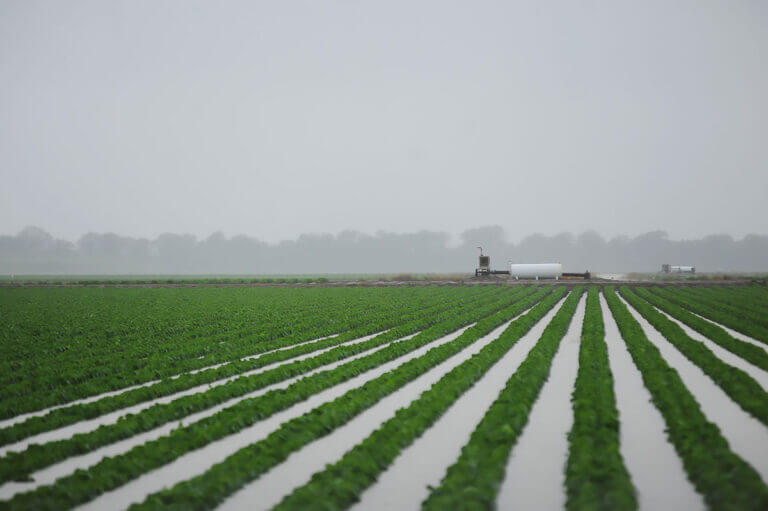
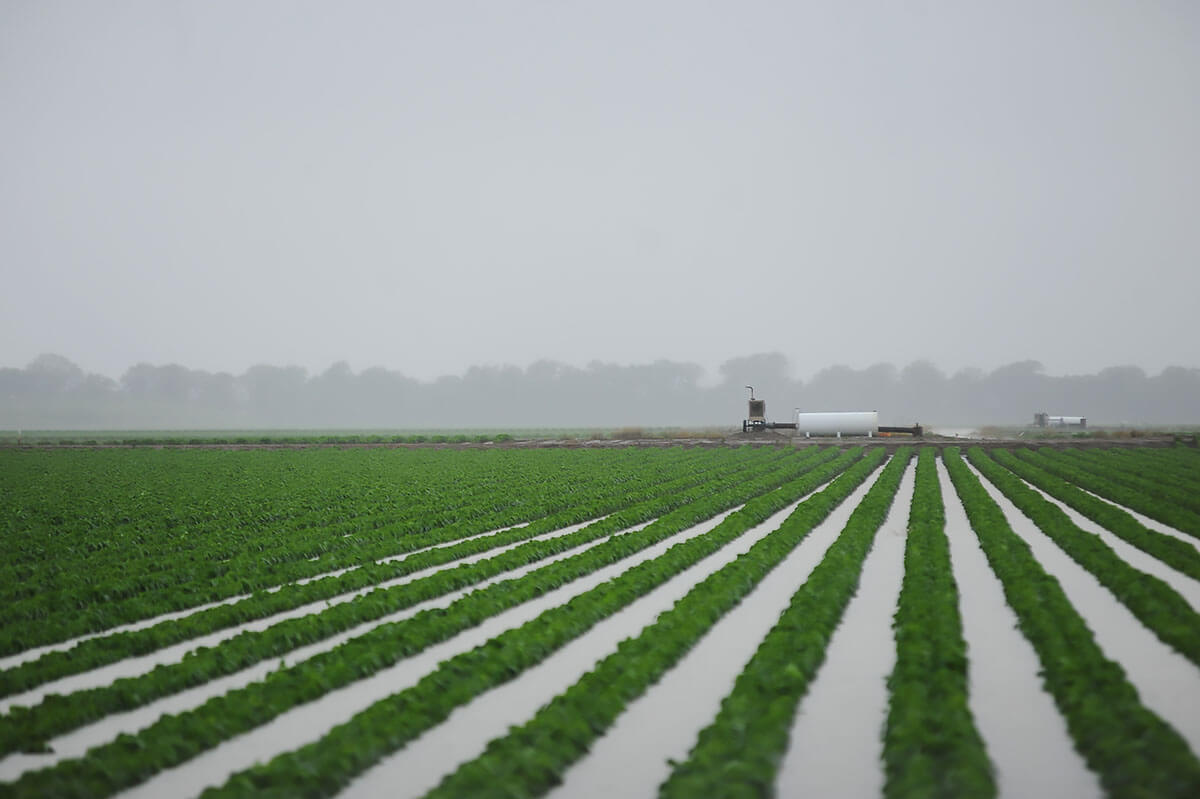
This story from Reasons to be Cheerful is one in a series about the confluence of capitalism, conservation and cultural identity in the Mississippi River Basin. It is part of Waterline and is sponsored by the Walton Family Foundation.
Dorothy Grady pulled at a tuft of green fronds sprouting from one of an array of soil-filled buckets sitting in the driveway of her house. A plump carrot, five inches long and brilliant orange, popped out.
Nearby, a sage shrub grew from another bucket, and scallions crowded a squat grow bag. In about three weeks, Grady would kick off the spring growing season on the land she cultivates around Shelby, Mississippi, including two plots at the now-closed middle school across the street, a small grove of peach and pear trees up the road, and five acres outside of town. She was ready to start planting eggplants, melons, tomatoes and a cornucopia of other produce that would soon end up in the homes of 127 nearby residents.
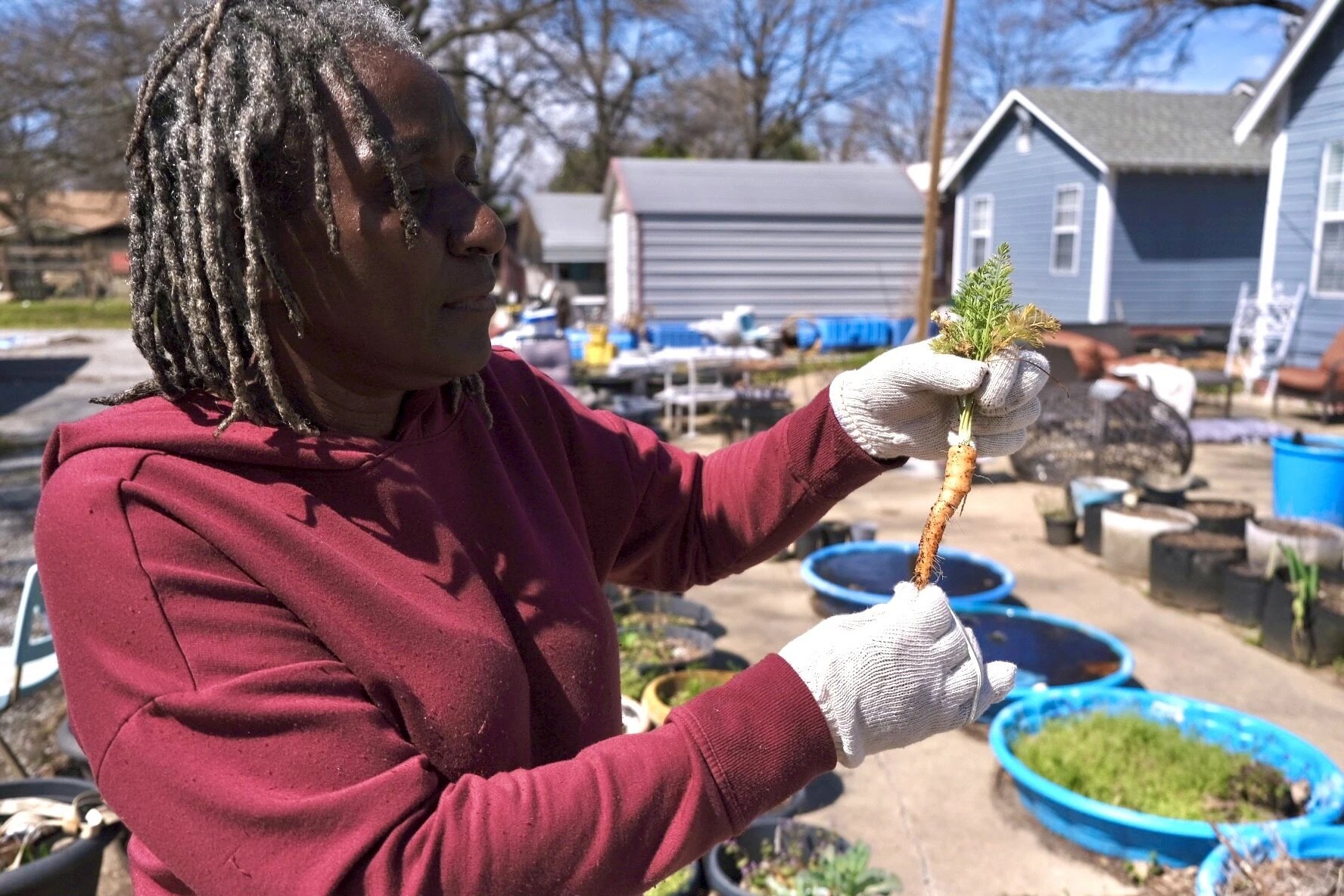
Shelby, a few miles east of the Mississippi River, is surrounded by flat, fertile farmland. But Grady’s vegetables and fruit are some of the only crops around that make it to local plates. The vast majority of Mississippi Delta farms are devoted to commodity crops like soy and corn.
Grady is one of almost a dozen local growers supplying produce to Delta GREENS, a collaborative research project that is delivering fresh ingredients to residents of Bolivar, Sunflower and Washington counties with diabetes and monitoring the health impacts. This “food is medicine” project is one of a number of initiatives that are supporting farmers and expanding the market for locally grown produce in this western Mississippi region. The benefits run in both directions: At the same time that community members are getting access to these nutritious ingredients, the small-scale farmers who grow them are getting a leg up.
“What we’re trying to do is build cooperative development amongst the farms,” says Julian Miller, founding director for the Reuben V. Anderson Institute for Social Justice in Jackson, a co-principal investigator for Delta GREENS, and a long-time local food advocate in the Delta region. “Ultimately, we want to be able to give them the capacity to scale and capture the broader market.”
The 200-mile-long Delta region, on the fertile floodplain sandwiched between the Mississippi and Yazoo rivers, has a rich agricultural history. Once known for growing cotton, today the area is dominated by ridged fields growing commodities that will be processed into animal feed or ethanol.
In the past, many Delta residents cultivated fruits and vegetables, says Miller, yet over time, pressures like farming mechanization and loss of land eroded the practice. Miller, a fifth-generation Delta resident who grew up a few miles away from Shelby, never saw anyone with a vegetable garden. “That tradition was lost, as far as growing your food,” he says.
Today, despite the abundance of fertile land, very little of it is dedicated to edible crops. About 90 percent of the food people eat in this region is grown elsewhere and imported. “That’s the irony,” Miller says.
And even imported fresh food can be hard to access. As of 2021, 63 of Mississippi’s 82 counties were classified as food deserts, meaning there is no grocery store or option to buy fresh ingredients in the immediate area.
Significant health and economic inequities overlay this region. In Bolivar, Sunflower and Washington counties — where the Delta GREENS study is focused — almost a third of residents live at or below the poverty level. Meanwhile, the rate of diabetes is twice the national average.
This confluence of public health disparities, economic inequity and lack of food sovereignty has fueled an effort to reestablish food-growing traditions, led by growers like Grady. A child of sharecroppers, Grady recalls her family always kept a garden when she was growing up, exchanging veggies and fruits with neighbors.
She has been involved with growing the local food movement in the Delta since the 1990s, when she first started working on farm-to-school garden projects.
In addition to helping establish hundreds of community gardens at schools and churches around the region, she’s also expanded her own growing operation, now supplying her harvests to residents in and around Bolivar County. Last year, the peach and pear trees she keeps yielded about 30 bushels of fruit, which went to local schools and was distributed through produce boxes for participants in the Delta GREENS study.
These weekly produce boxes are helping to address one of the structural challenges of developing the local food system in the Delta, explains Miller: the lack of a consistent market. While many residents are interested in eating more local produce, growers don’t have a reliable pathway to sell to the public. But nutrition- and food-security projects that source produce from local farmers are helping those agricultural businesses scale up.
About 40 miles northeast of Shelby, Robbie Pollard is busy planting and tending to more than 10 acres of fruit and vegetable plants.
Pollard grew up around farming — his grandfather grew commodity crops. But he says he didn’t know anything about cultivating food until he tried growing his own in his backyard. It turned out to be a calling, he says, and he soon left his job in IT to pursue it full time.
Farming fruits and vegetables is more complex than commodity crops, explains Pollard. For one, it’s more labor intensive — weeding, tending and harvesting by hand. Unlike commodity farmers, who deliver their crops directly to local co-ops, distribution is harder for fruits and vegetables, Pollard says: “We have to find our own markets.”
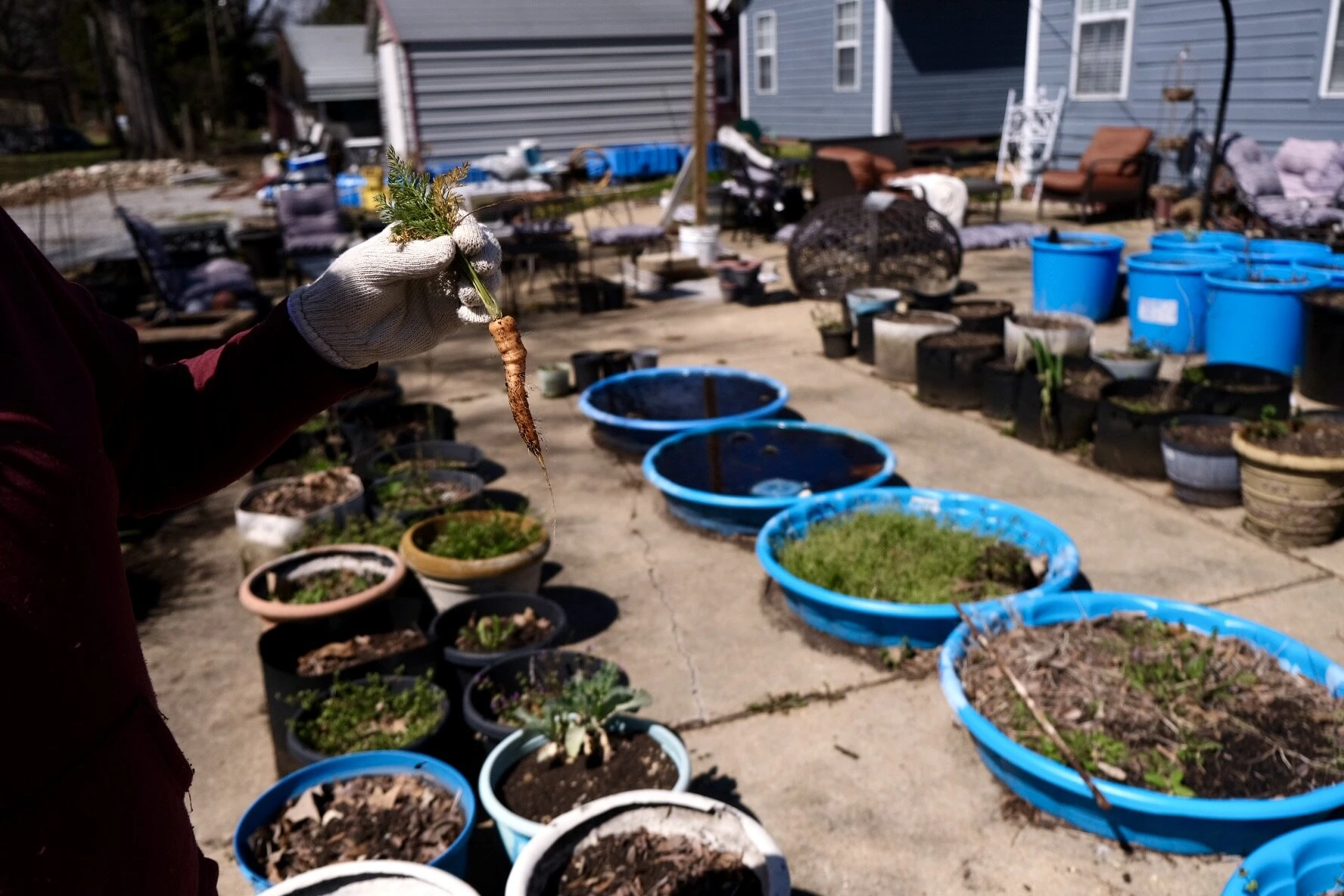
Pollard has found a range of ways to distribute his produce through his farm, Start 2 Finish, and his associated healthy foods initiative Happy Foods Project. Today, he is one of the main growers supplying for Delta GREENS, as well as similar projects that provide households with regular local food boxes, including another food prescription project, Northern Mississippi FoodRx, in conjunction with the University of Mississippi. This summer, he’ll also be distributing through a mobile market, and he recently started selling through a grocery store with a focus on local products that opened in the city of Clarksdale in May.
Produce prescription boxes have given him a way to steadily expand his farm by reinvesting each year in incremental upgrades. He’s progressed from doing all his work by hand, to having a tiller, then a small tractor. He’s now leasing 46 acres of cropland. Last year, he grew four acres. This season, he put in more than 10, with plans in the works to expand hydroponic and aquaponic capacity. Soon, he hopes to work with other local growers to try a range of different techniques across the acreage.
Tyler Yarbrough, Mississippi Delta project manager for the nationwide organization Partnership for a Healthier America, has worked alongside Pollard on a range of projects building out the region’s local food movement, including some that provide households with produce for a limited amount of time — like Good Food at Home, which has supplied about 500,000 servings of produce to local families through weekly boxes, each household eligible for 12 weeks at a time. Through these shorter-term projects, growers are able to take steps to become more stable, while building a demand for local produce among consumers.
“You can leverage it to bring on the consistency, and to further bring those markets into your orbit,” Yarbrough says.
While produce box models have yielded success, they have the most impact for farmers when they’re paired with other initiatives, according to Yarbrough. What’s key is to give growers flexibility with funding so they can build up over time.
“It can’t just be one thing,” Yarbrough says. “It needs to be coupled with funds for these farmers to actually build their capacity on their farm. It needs to be coupled with connecting all the dots with the market. It has to be a holistic approach.”
Within the Delta region, the local food movement still faces many barriers, according to Natalie Minton, a University of Mississippi researcher who is working with Pollard to study the local food market, and on North Mississippi Food Rx. Growers struggle to find — and afford — workers. And without a reliable market, growing their business is very difficult.
There are also environmental factors. Beyond extreme weather, like drought and severe storms, growers face challenges related to the dominant commodity cropland. Pesticides and chemicals routinely used on commodity crops drift, harming food crops.
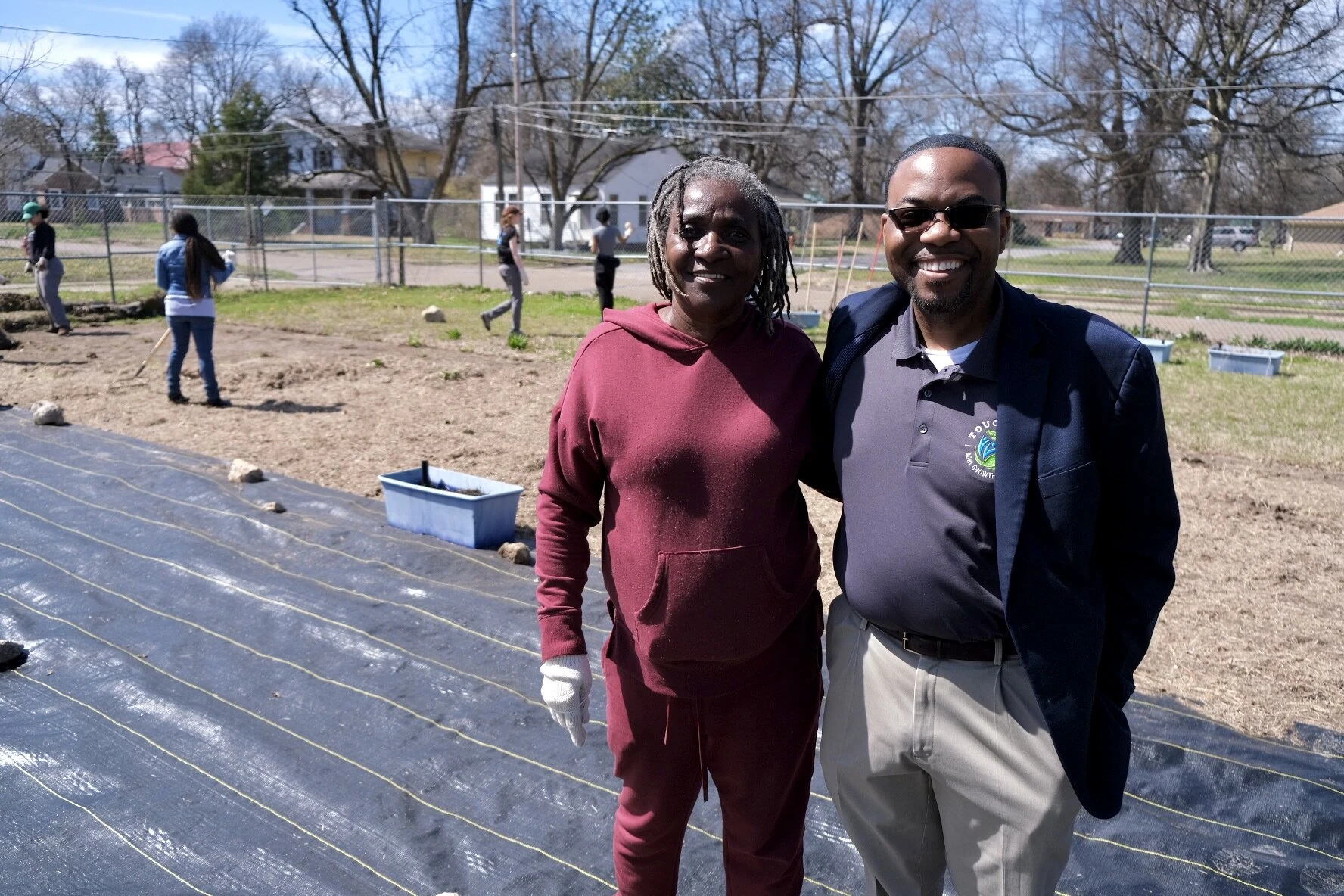
Yet, Minton says the roots of change in the local food system are taking hold. The success of farmers like Pollard is showing how specialty farming can be a viable career.
For projects that rely on grants and outside funding like Mississippi Fresh, another major challenge is working with federal programs, according to Miller. Trump administration cuts, including to subsidies that support buying from local producers, are straining local food systems. Delta GREENS is funded through the National Institutes of Health, and Miller says there is uncertainty around whether support will continue.
Despite the uncertainty, the local food movement in the Mississippi Delta is notable because it is so locally driven, says Marlene Manzo, of HEAL Food Alliance, a food justice coalition that works with groups across the country, including Mississippi Fresh. Manzo says that the growth of the local food supply within the Mississippi Delta shows the power of working at a small scale to make changes that really respond to the community.
“What we do know is building collective power within our communities and in regional systems can really make a large, lasting impact,” she says.
Grady sees a shift happening in the community. She knows more people, including her family members, who are starting to grow some of their own food. One former student is now a chef in a nearby school district. He’s keeping a garden and using the ingredients in the school kitchen.
“The interest of other people wanting to do this kind of work was the greatest reward of it all,” she says.
Elizabeth Hewitt is a freelance journalist based in the Netherlands. She’s interested in how policy-making impacts lives, and likes to write about local solutions to big problems.
- Software glitch delays distribution of full SNAP benefits in Mississippi - November 20, 2025
- Their loved one died far from home in a private Delta prison. Who’s accountable? - November 20, 2025
- Amazon announces $3-billion data center planned for Warren County - November 20, 2025